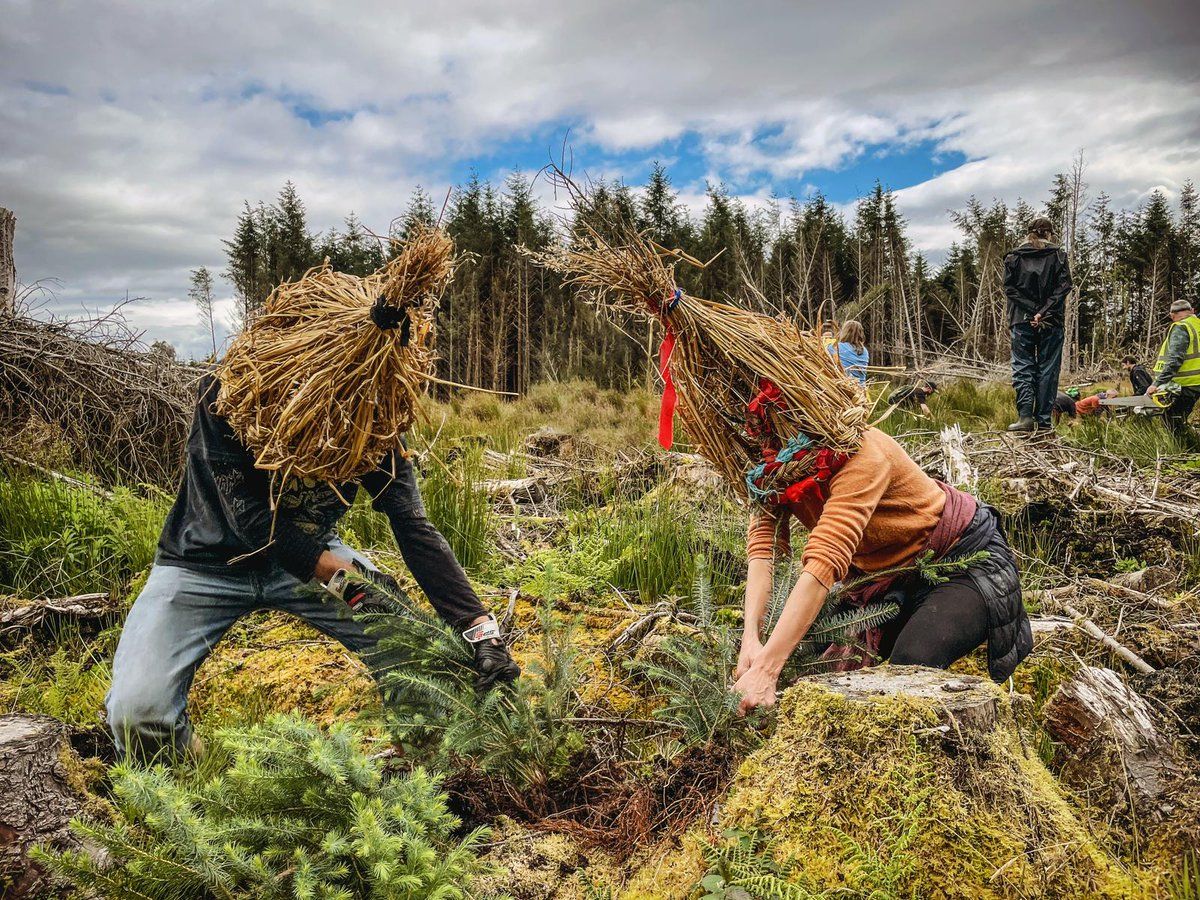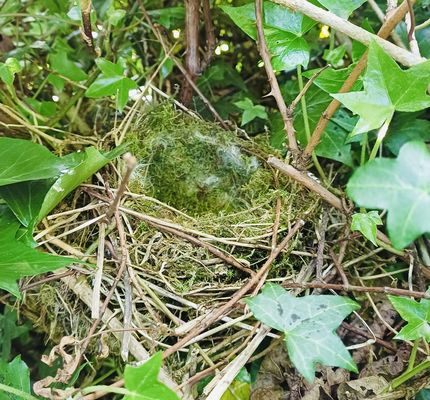IT'S something that you wouldn’t expect climate and environmental activists to be doing – ripping up young trees. But that’s exactly what these ‘masked’ warriors were doing in Leitrim this week. They’ve had enough of asking the government to do the right thing. As Greta Thurnberg would say, it’s time for action.
And if you’re not going to take action to save the planet itself, then when are you?
The Irish government ticks the box for planting forests as demanded by Brussels. But these forests can’t be enjoyed by you and me and the people living beside them, magical places like Colin Glen that you can walk through on a summer’s day and enjoy the wildflowers, birds and butterflies.
No, these forests are planted in much the same way that wheat or barley are planted. Except that instead of waiting until autumn to reap the crop, you have to wait 25 years for this forest ‘crop’ to mature.
The trees that enable the Irish government to ‘fulfil’ their biodiversity obligations are sitka spruce – the largest species of spruce in the world. In its native habitat on the west coast of Canada and America, it can grow for 700 years and wildlife thrives on it. In Ireland, planted methodically like columns of marching soldiers, it creates a dead zone where nothing else lives.
When it was introduced into Europe, it soon outgrew the native trees – in Norway the sitka grew 25 per cent faster than the native variety. In Ireland, our incessant rain helps it sprout at record speeds.
Massive international pension schemes buy up parcels of Irish land and plant them with sitka, knowing that in 25 years their investment is guaranteed. The community living alongside these forests is so far away that the companies will never hear their concerns, even if they shout at the top of their voices.
The same applies now as 5 years ago when this video was made. The 🌲 🌲plans by @pippa_hackett @McConalogue @agriculture_ie are simply going to continue & worsen this for us & our communities in #Leitrim & acros the West of Ireland #communitiesnotconifers https://t.co/vdx3d2iEYx
— Save Leitrim (@SaveLeitrim) August 4, 2023
Leitrim is one such place. The county below Donegal was once packed with people – almost 150,000 before the Great Famine. Today, just 35,000 people live there.
This county is ripe for growth – but not the kind the locals want to see. Sitka spruce has been planted everywhere. Many picturesque cottages on hillsides and glens are now surrounded by towering, foreboding forests that even the midsummer sun can’t penetrate. They are as biodiverse as a black hole in the cosmos.
The Irish government says it’s fulfilling Europe’s biodiversity demands and that the country now has 11 per cent forest cover – still dwarfed by Europe’s 40 per cent. It sounds like a promising start – but when you take away sitka spruce and other similar fast-growing conifers, you’re actually left with less than two per cent native forest.
On either side of the border, when governments announce another “million” trees will be planted, it pays to look out for the small print. It might win them a good headline in a newspaper, but experts and environmentalists are slowly discovering the truth.
Rewilder Eoghan Daltun sees through the Irish government’s pledge to plant 440 million trees by 2040, pointing out that 70 per cent of them will be sitka or similar species.
“It’s a totally non-natural thing to have a monoculture of any species of trees. Plus they are not wild trees, they are going to be planted in rows,” he says.
Leitrim is perhaps the worst hit, he says.
“I have a friend who lives in the middle of one of them and he says it is absolutely awful. His place is almost like being on an island surrounded by these walls of trees, dead zones.”
And that’s what brought 150 climate activists to a government plantation on a Leitrim hillside this week. Dressed as Straw Boys in traditional costume, they uprooted hundreds of sitka spruce saplings recently planted on an old bog.
The group, aged 5-75, used the saplings to block drains in the publicly-owned plyantation near Manorhamilton, thereby beginning restoration of the degraded peatland. They also planted native broadleaf trees on a nearby farm at the site of this year’s #ClimateCampIreland pic.twitter.com/addPnQ5MbW
— Slí Eile (@sli_eile_) August 13, 2023
They want native Irish forests planted and managed by the local community – something that will help absorb carbon and be enjoyed by wildlife.
Love Leitrim organiser Jamie Murphy said: "Now, more than ever, we need to challenge the system that is resulting in mass non-native forestry plantations, continued expansion of energy sapping data centres and carbon heavy extractive industries like mining.
"These types of industries have no role to play in creating a safe and sustainable future for anyone.”
It’s beyond doubt that these rural communities are right. It’s just that in many parts of Ireland, money trumps everything.
Emeritus Professor of the Geography Department at Maynooth University John Sweeney says: “The present forestry model grows the wrong trees in the wrong places. We must not sacrifice biodiversity in western Ireland to provide sitka spruce plantations to enable biodiversity destruction on intensive dairy farms in eastern Ireland.”
Leitrim might be the most famous case of a seemingly powerless community being environmentally abused, but, of course, similar things are happening closer to home. All around the outskirts of Belfast, sitka plantations are at various stages of growth. Next time Dúlra sees a sapling, he’s following Leitrim’s example and pulling it out.
If you’ve seen or photographed anything interesting, or have any nature questions, you can text Dúlra on 07801 414804.
Reader Marie Lynch (81) reports having a great spotted woodpecker in her Springfield Park garden for the second year in a row. Birdwatcher Marie is blessed to have a river and wooded area behind her Springfield Park home – and packs her feeders with peanuts to attract them. Dúlra is doing the same – but he mustn’t have Marie’s touch because he’s yet to see one!









